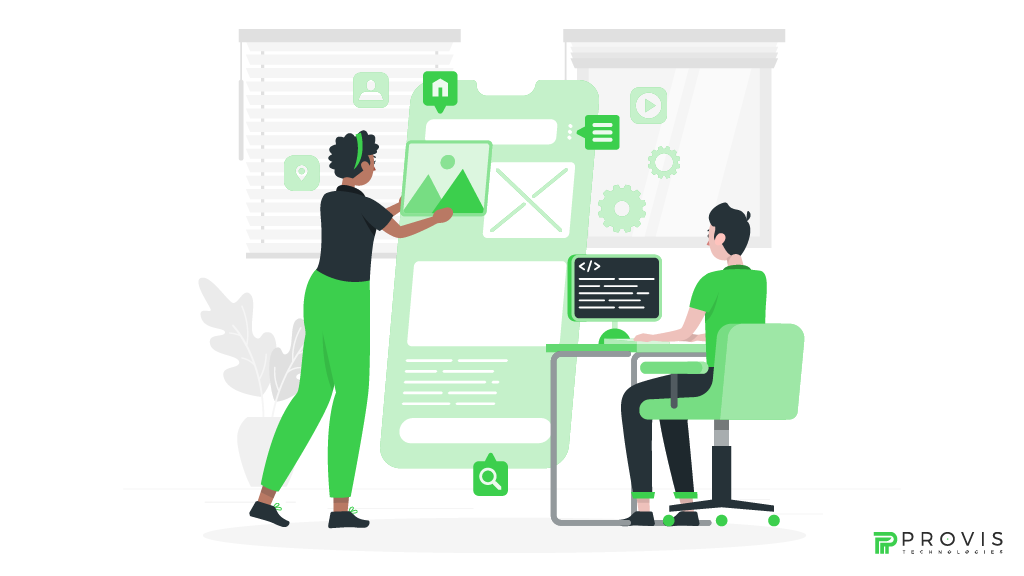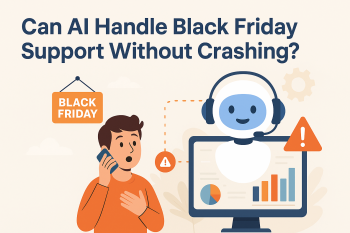There is constant growth in Mobile app development trends, which is why we need to align ourselves with newer methodologies and technologies. One of these technologies is Backend-Driven UI or BDUI. If you are a developer or a product manager aiming to provide a seamless application experience, you might turn your eyes to BDUI. This is because it changes the approach of the creation and implementation of the Mobile app user interface design. At the same time, it works in favor of the users’ needs.
But what is Backend-Driven UI, and why should we bother with it? Well, let’s go deeper with Provis Technologies, a leading mobile development company, and find out how this idea can change mobile development.
What is Backend-Driven UI?
BDUI is a development concept where the structure and behavior of the Mobile app UI development are prescribed by the backend server. In contrast to the typical approach when the application is developed and layouts are built in, BDUI supports dynamic changes by sending the configuration information for UI elements to the app from the server.
Imagine if the backend has the capability of deciding what the actual user is going to see and engage with. It is possible to control the UI from the backend and this way developers can update and amaze the users.
Also read: How to Improve User Experience on Your Website?
The Functioning Of Backend-Driven User Interface
To understand Backend services for mobile apps, let’s break it down into key components:
- The backend transmits UI definitions to the mobile app mostly in JSON or XML. This layout encompasses some aspects concerning length, style, and other features of interactivity.
- The mobile app includes a rendering engine that can decipher instructions from the backend. Using the received data, this engine builds the UI step by step.
- There is constant interaction between the app and the backend, thereby making a particular UI change in real-time or during the subsequent launch of the app.
- UI control is handled by the backend while the general application is in charge of rendering and use controls, making it easier to use.
The Advantages of Incorporating Backen Driven User Interface
Backend mobile application architecture offers several advantages that make it an attractive choice for mobile app development.
- BDUI Ensures Faster Updates: Without any doubt, one of the primary benefits of BDUI is the opportunity to implement changes seamlessly and fast. That’s why there’s no need to wait for the app store approval every time there is a change in the UI. This is because the controls are held by the backend. Moreover, with a few modifications to the backend, users will be able to view the modifications immediately.
- Personalization Is The Key To User Satisfaction: Synchronous with this, BDUI allows you to send specific UI configurations tailored for individual users. For instance, an e-commerce application allows applications to provide products and product placement based on the preferences of users.
- Consistency Across Various Platforms: When you have control over all the UI, you can keep it in sync, especially iOS and Android. This cuts development time and keeps the difference between the two platforms to a minimum.
- Reduces Effort In The Development Process: Developers no longer need to hardcode the UI elements frequently. Now, they are centered on a sufficient rendering engine and the incorporation of a backend function. This accelerates the app design and enables groups to focus on the app’s performance.
- Easier Scalability: When it comes to changes or new product releases, BDUI simplifies how the alteration would be done on the app you are creating. With this tool, you can easily adapt the UI knowing that you don’t have to write a lot of code.
Some Of The Real-World Use Cases of Backend-Driven UI
BDUI has been implemented in many leading companies to enhance their operating applications.
- Amazon or Flipkart use BDUI to inject innovation into product pages, header banners, and cart sections with different colors. This depends on shoppers’ behavior and seasonal trends.
- BDUI is used by apps such as Netflix, Spotify, and others to illustrate home screens, provide recommendations, and change the layout of home UIs for new features.
- Banks and other platforms use BDUI to offer individualized interface widgets and provide balance and other account data. Also, BDUI helps inform about new offerings without the need for application updates.
What Are The Challenges of Backend-Driven UI?
Like any other concept, the BDUI concept has its drawbacks despite numerous benefits. Here are some hurdles you might face:
- The backend must be able to accommodate changes and ever-shifting UI designs. This is a complex process and needs a professional development team and advanced preparation.
- Every time the server is accessed results in performance drawbacks, if not controlled appropriately. Some strategies followed by web developers include caching of Web applications and management of efficient data transfer.
- Since UI is not hardcoded, finding debugging issues related to layouts or interactions becomes difficult and time-consuming.
The Best Practices for Implementing Backend-Driven User Interface
- Ensure that your rendering engine can understand intricate UI design principles while being able to address special concerns.
- Optimize your data representation and format and incorporate the use of cache when making server requests.
- Several testing activities should be performed to detect the existing bugs to provide a smooth user experience. Also, automated testing is quite useful for specific testing tools.
- Be sure that in your backend for mobile apps design, you have enough capacity to accommodate the traffic growth.
- Ensure that all communication between the smartphone app and the server is always secure. This will ensure the UI definitions cannot be tampered with or accessed by unauthorized people.
The Final Thoughts
With dynamic UI, frequent releases, and the optimization of UI to deliver customized experiences, BDUI allows the developers to keep pace with the users’ expectations and compete in a rapidly evolving technological environment. There are of course several difficulties, but these can be addressed with the right planning.
With the Mobile backend as a service complex and oriented to the user, the acceptance of innovations like BDUI will be crucial.
Be prepared to advance your mobile app because it is high time to provide some focus on Backend-Driven UI.
Written By
Author's Picks
- Top Mobile App Development Platforms
- 12/07/2023
- A Complete Guide to Pharmacy Management Software Development
- 09/09/2024
- Android vs iOS Which is the Best Platform for App Development?
- 05/07/2024
Categories
- AI for Startups
- AI in Web Development
- AI Integration
- AI Platforms
- AI Prompt
- AI Tools
- AI Trading Software
- Android App
- Android vs iOS Development
- Angular
- API
- API Development
- App
- app development
- App Idea
- App User Feedback
- Application
- Artificial Intelligence
- Audit Services
- Automotive Industry
- Awards and Recognition
- Business Consulting
- Business Website
- Chatbots
- CRM
- CRM for Financial Advisors
- Custom CRM
- Custom SaaS
- Custom Website
- Customer Service
- dashboard design
- Developing a Mobile App
- Digital Business
- E-commerce
- EMR Integration
- Finance
- Financial Advisors
- Financial Advisors
- GIT
- Health Insurance
- iOS App
- iOS App Development
- IoT Mobile App Development
- IoT Platforms
- IT Audit Services
- IT Consulting
- IT Strategies
- Java Development
- Laravel
- Lean Canvas
- Learning Management System
- Logistics Apps
- Mobile App Development
- MVP
- Native App
- News Aggregator Site
- OTT
- Outsourcing IT
- Payment Gateway
- predictive analysis
- Product Launch Strategy
- Progressive Web App (PWA)
- Prototype
- Recommender Systems
- Ruby
- SaaS
- SaaS Application
- SaaS Business
- SaaS Company
- SaaS Development
- SaaS Product
- SaaS Project
- Sales Funnel
- SEO
- Shopping Cart
- Software Development
- SSL and TLS
- Startup Checklist
- Technology
- Tetradic Color Scheme
- UI/UX Design Company
- Unit Testing
- User Flow
- User Testing
- Web Development
- Web Performance Optimization
- website Maintenance Services
- Website Migration Service
- Website Speed Optimization
- WooCommerce
- WordPress





